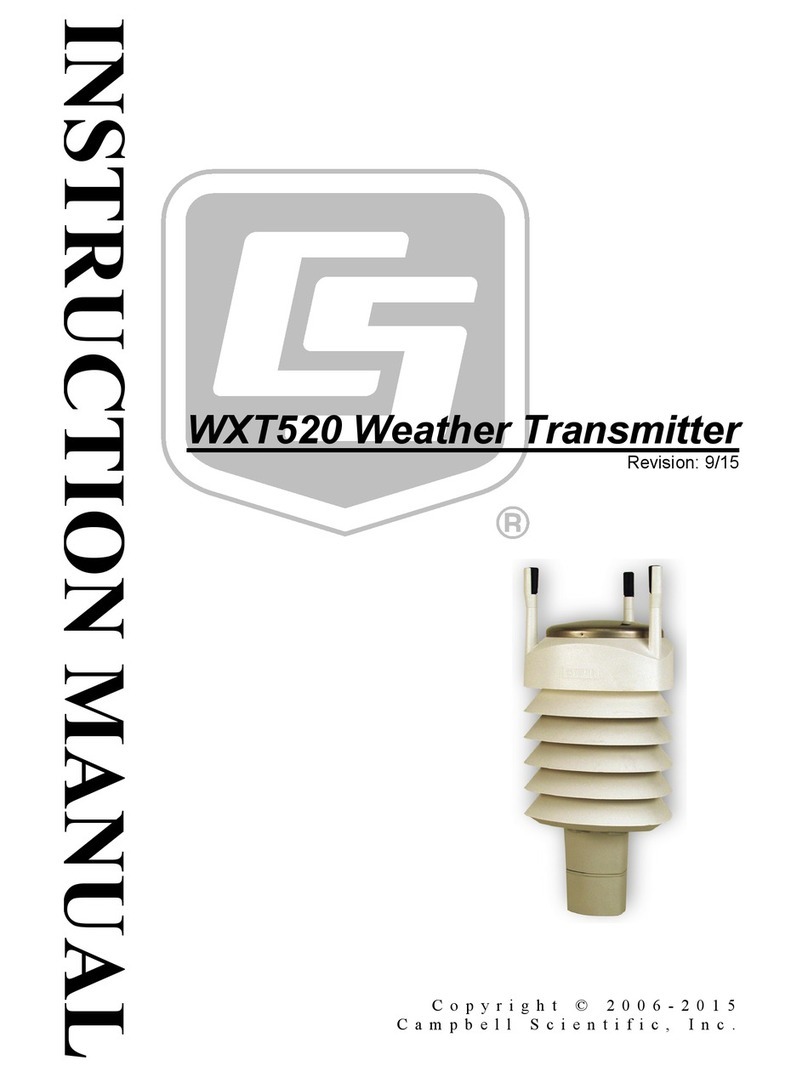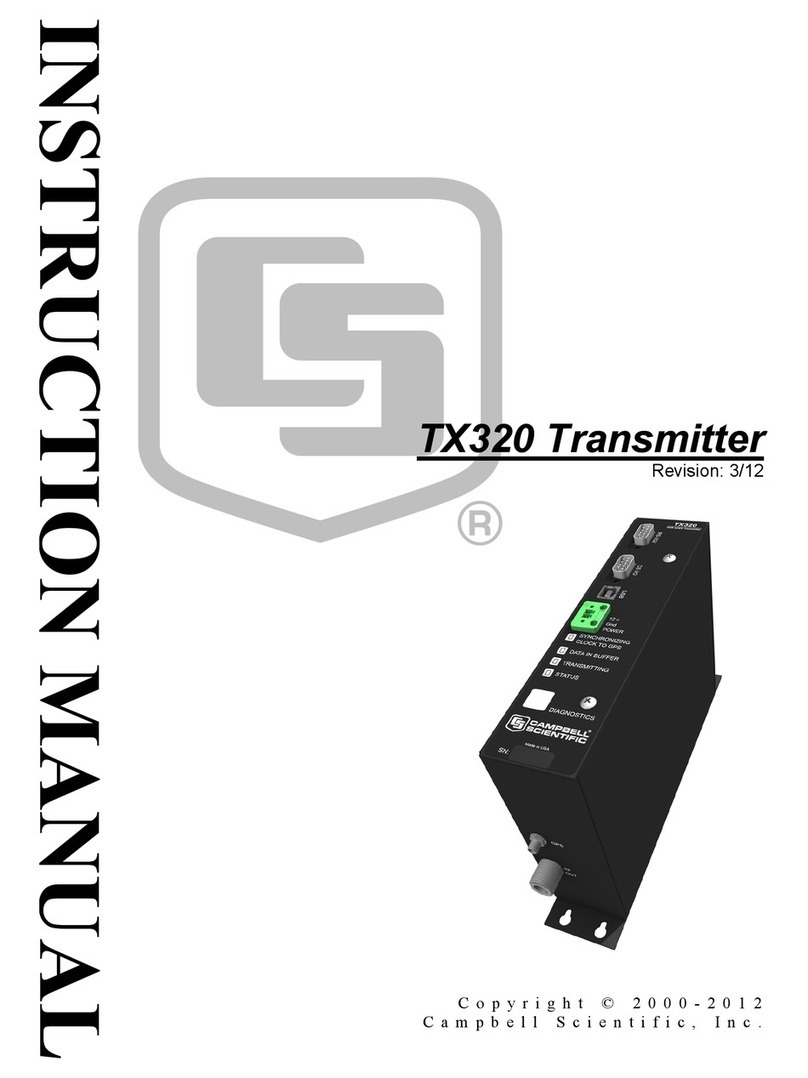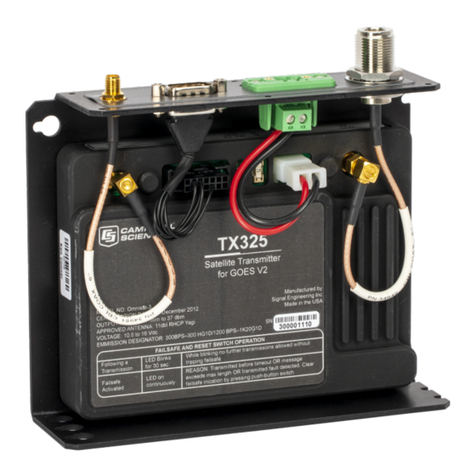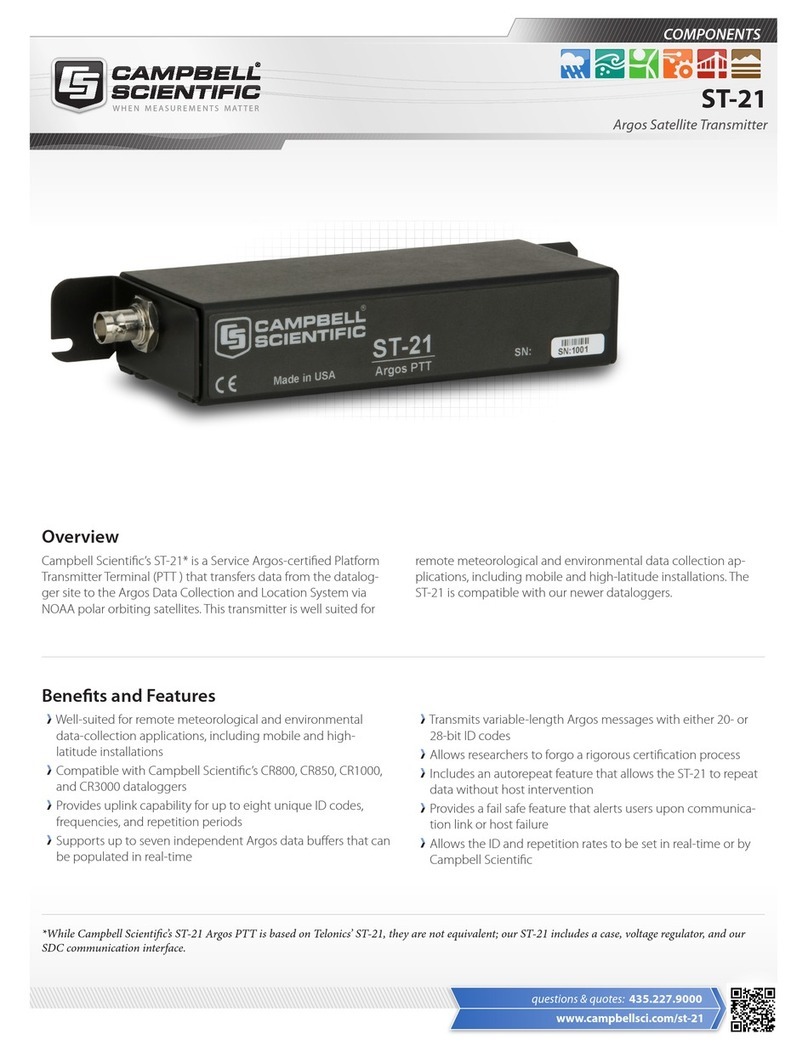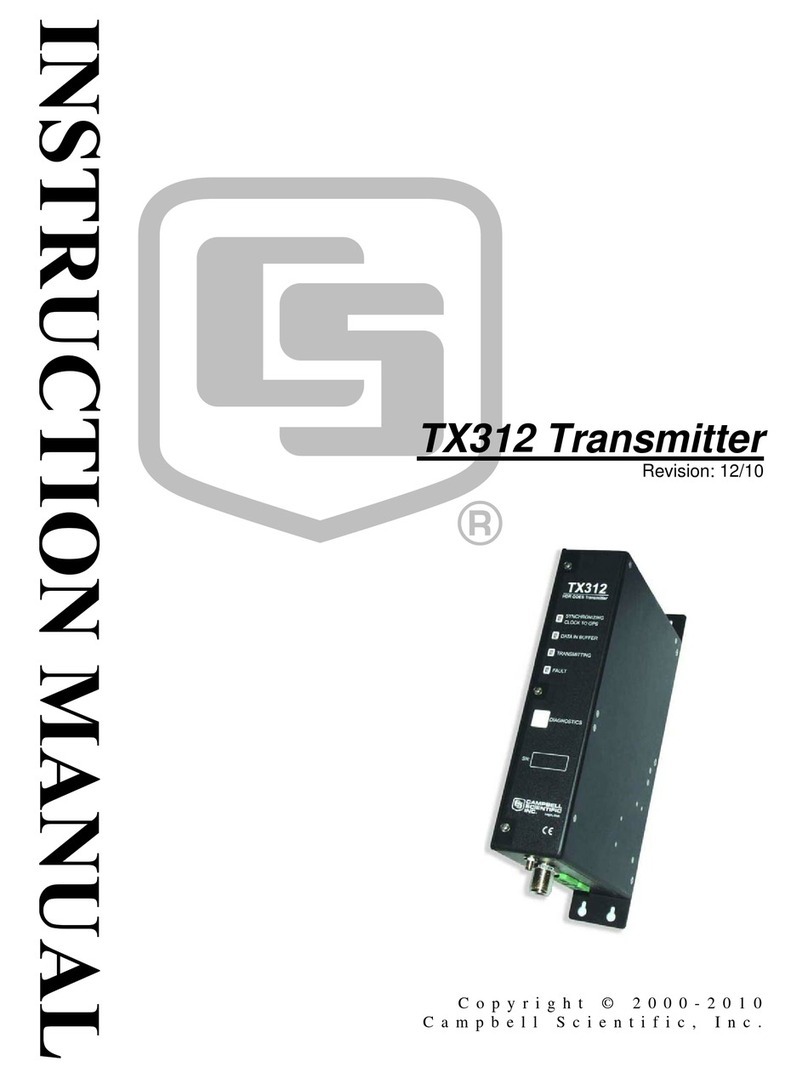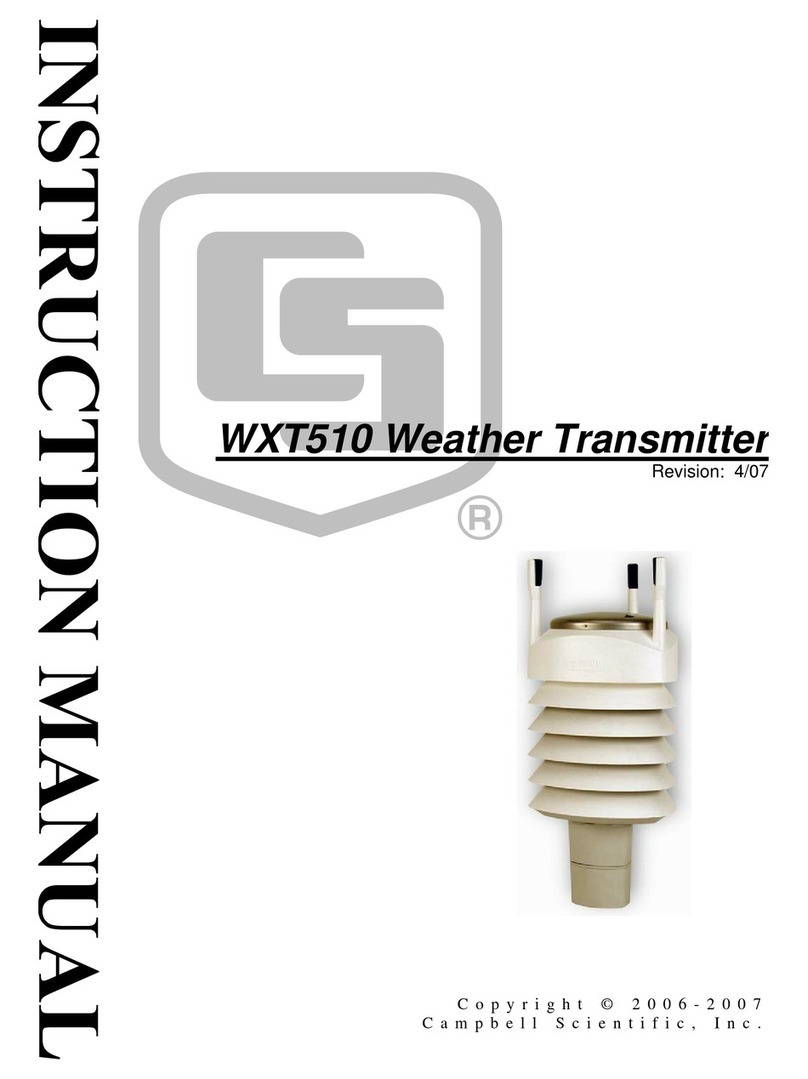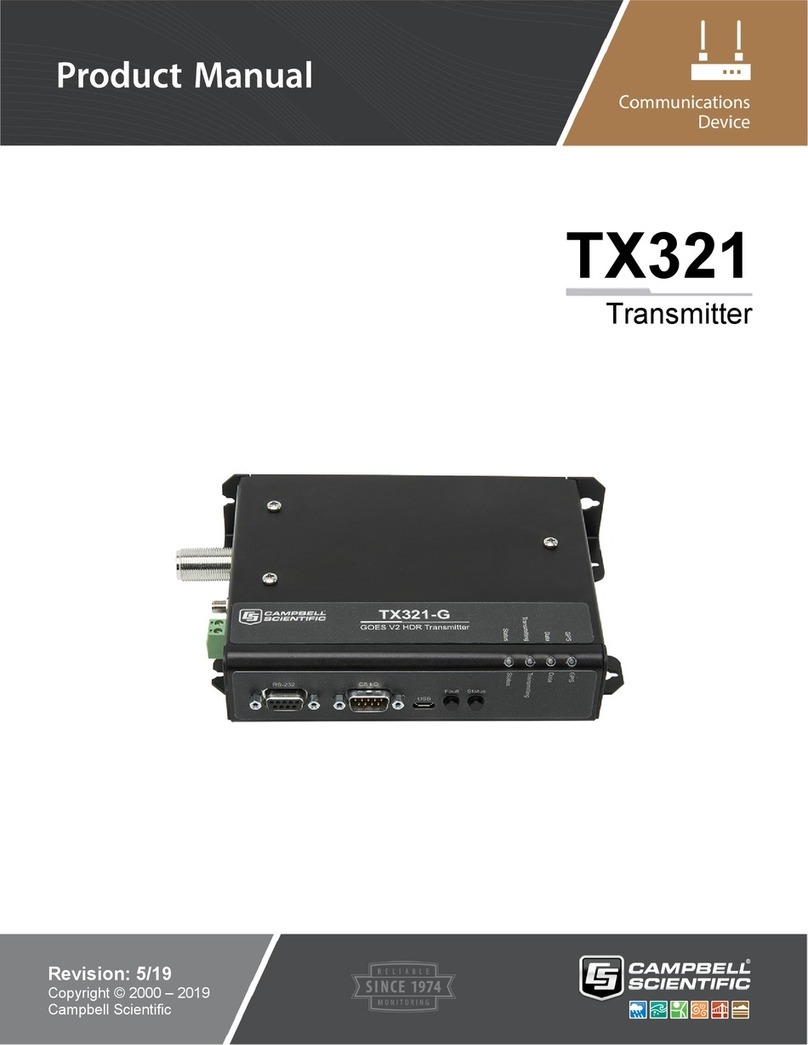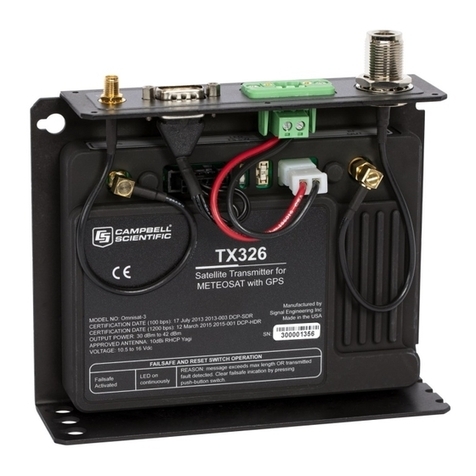
TGT1 GOES Transmitter Table of Contents
iii
I. Changing the 21X’s RAM or PROM Chips................I-1
I.1 Disassembly of 21X................................................................................I-1
I.2 Installing New RAM Chips ....................................................................I-2
I.3 Changing PROM Chips..........................................................................I-2
J. Telonics Model TGT1 GOES Certification by
NOAA/NESDIA...............................................................J-1
K. High Resolution 18-Bit Binary Format..................K-1
Figures
2-1 Data Retrieval Diagram............................................................................2
4-1 A Field Station Monitoring a Well’s Depth..............................................4
4-2 Inside the ENC SAT Enclosure of a Typical Field Station.......................4
6.3-1 Antenna Mounting Hardware, Exploded View......................................7
6.3-2 Antenna Mounting Hardware, Assembled View 1.................................7
6.3-3 Antenna Mounting Hardware, Assembled View 2.................................8
6.3-4 Example Antenna Orientation Diagram.................................................9
G-1 Magnetic Declination for the Contiguous United States......................G-1
G-2 Declination Angles East of True North................................................G-3
G-3 Declination Angles West of True North ..............................................G-3
H-1 Disassembling CR10............................................................................H-2
H-2 Jumper Settings for Different RAM Configurations............................H-3
I-1 Memory Sockets on CPU Card ..............................................................I-1
Tables
6.1-1 Wiring Diagram.....................................................................................6
8.2-1 *# Parameter’s Descriptions................................................................11
8.2-2 Decimal Equivalent .............................................................................12
8.3-1 *#60 Commands..................................................................................13
9.1-1 CR10X’s Instruction 120 Parameters and CR10’s
Instruction 99 Parameters ...............................................................14
9.1-2 CR10X Example Program...................................................................15
9.2-1 P123 Parameter’s Descriptions............................................................20
9.3-1 21X’s Instruction 99 Parameters..........................................................22
9.3-2 21X Example Program ........................................................................23
D.1-1 Impedance Matching Correlation......................................................D-1
D.2-1 Pout Values.........................................................................................D-2
